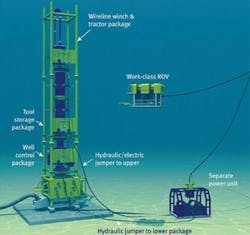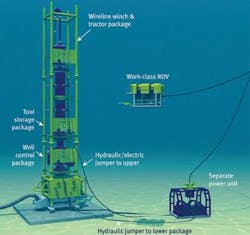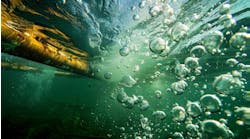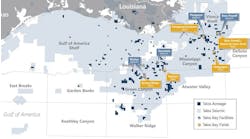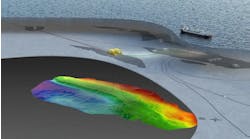Matthew Law
Expro Group
Expro Group in Aberdeen has been leading a joint industry project (comprised of Expro and three major oil companies) to develop a new subsea well intervention technique, known as the Rigless Lightweight Well Intervention system.
Subsea well intervention has been in practice for almost 20 years, but interest in the technology has recently heightened due to a combination of factors. First of these is the high price of oil, which has prompted operators to undertake well intervention work previously considered too costly. Secondly is the drive to maximize recovery rates from subsea wells, which has led operators to re-examine the solutions available. Finally, the growing numbers of subsea wells in new deepwater arenas and the general shortage of rigs have fostered interest in alternative well intervention techniques.
The numbers of installed and projected subsea wells are increasing worldwide. In addition, the maintenance needs of these wells will increase almost exponentially in the foreseeable future. This growing need has led the project team to design a system that is autonomous and also eliminates the need for rig-based intervention.
This approach should reduce intervention costs significantly, while allowing deployment flexibility in terms of reduced mobilization and transit times both between and within field locations. However, there are still challenges ahead.
Traditionally, intervention techniques have employed rig-based systems that required a riser or high-pressure mechanical conduit to be deployed between the rig and the subsea well. The associated rig costs and deployment time have commercial implications to the extent that intervention may not be economic on certain subsea wells. Rig-based systems also result in significant issues with respect to management of hydrocarbons at the surface, in turn requiring safety, operational and environmental factors to be addressed.
More recently, light well intervention techniques using dedicated intervention vessels have been developed that provide rigless solutions, but have technical limitations in terms of well configuration and water depth. Vessel availability and cost must also be taken into account in a currently tight market.
However, instead of using a rig or dedicated intervention vessel, the general preference in deepwater would be for deployment from a more readily available and cost-effective vessel -- such as a low-specification DP-2 (dynamically positioned Class 2) monohull (large supply vessel, anchor handler or similar). The Rigless system fulfils these criteria.
The Rigless system is comprised of a subsea wireline winch, wireline tool storage unit, and well control package, with associated controls and deployment equipment. This combination provides multiple wireline operation capability, plus full well control as required. The system is specified with a large bore capability, 10,000 psi working pressure and the potential to operate in waters 10,000 ft deep. It can also handle most wireline tasks carried out with conventional wireline techniques, including running and retrieval of crown plugs and downhole production logging.
For Expro’s project engineering team, one of the most significant issues is to design a wireline winch that can successfully deploy 25,000 ft of wire into a well - consistently and remotely - inside a pressure housing containing 10,000 psi well pressure and 10,000 ft below the surface vessel. A novel solution has been developed that addresses these issues, and subsequent extensive prototype testing will be carried out to qualify the design prior to subsea deployment. Minimizing the system’s installation weight is also critical.
A conventional surface-mounted subsea wireline unit provides visual feedback to the operator. However, the Rigless system is visually inaccessible, representing a challenge for the design team. The control system is being designed therefore to ensure an operator interface that provides the necessary feedback and affords appropriate diagnostic and redundancy capabilities.
For well control in water depths of 10,000 ft, the Rigless system achieves benefits in terms of improved safety and environmental aspects. No wireline stuffing box is required, thereby eliminating a potential leak path. Also, no hydrocarbons are retrieved to the surface vessel.
Phase I of the project, demonstrating feasibility of the system, was successfully completed in 2004. Phase II, under way this year, involves detailed engineering of the complete system and prototype testing of the significant new components and will continue throughout 2006. Phase III (manufacture of the first complete system) will commence thereafter, with the intention of the first subsea field trials taking place in 2007.•
